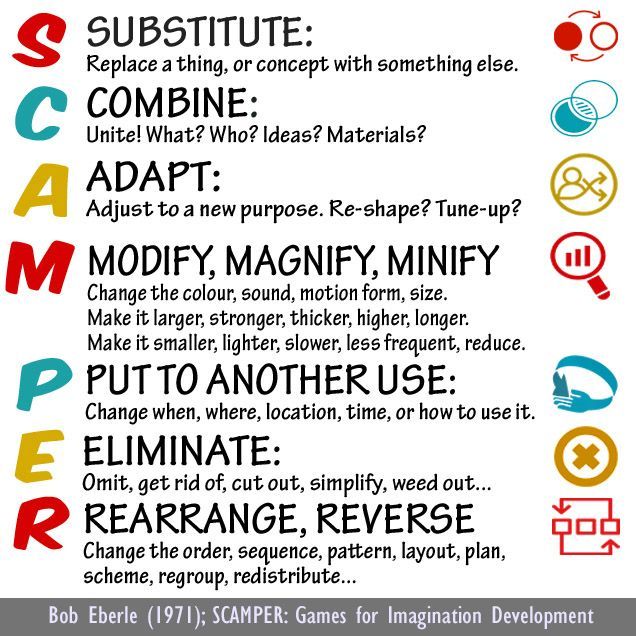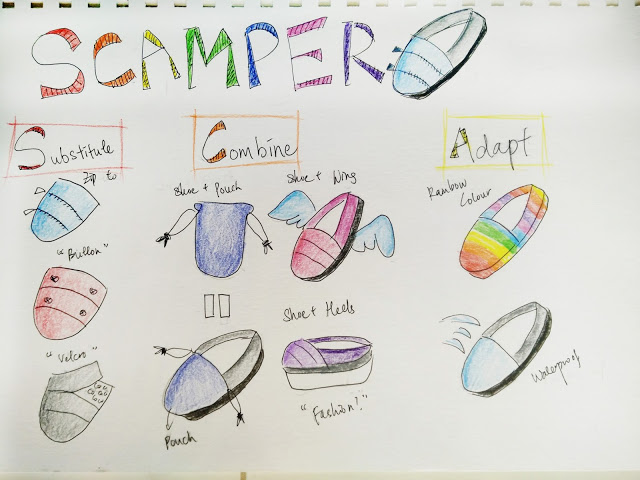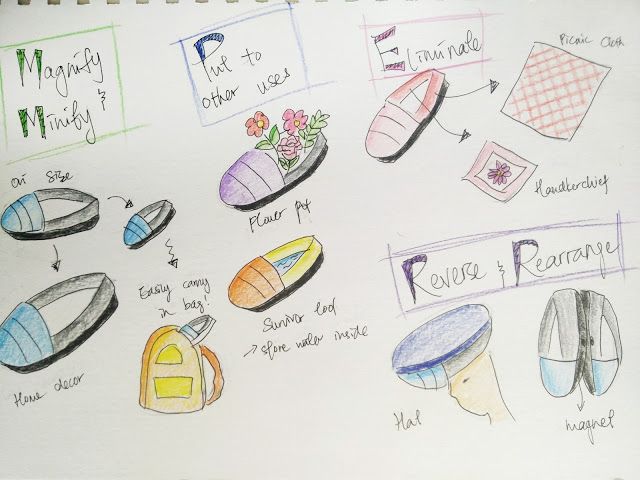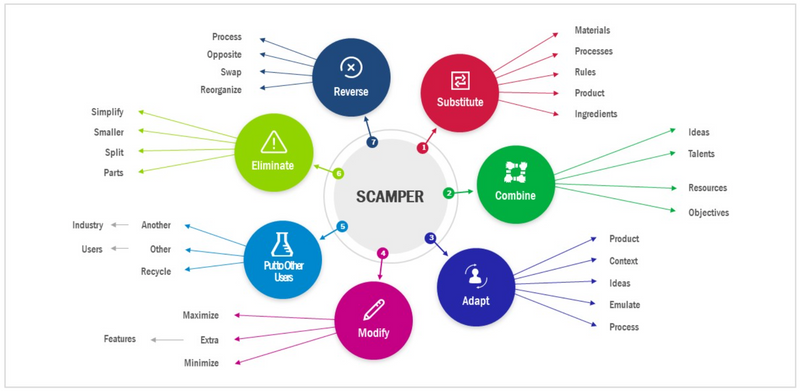
This logo isn't an ad or affiliate link. It's an organization that shares in our mission, and empowered the authors to share their insights in Byte form.
Rumie vets Bytes for compliance with our
Standards.
The organization is responsible for the completeness and reliability of the content.
Learn more
about how Rumie works with partners.
Are you stuck trying to come up with ideas for a new product or service?
Could you and your team use an innovative brainstorming technique?
 Photo by Nathan Dumlao on Unsplash
Photo by Nathan Dumlao on UnsplashWhether you are:
adding a new product to your business,
developing a new service or process, or
looking for a fun team-building activity,
SCAMPER can help get you unstuck.
What Is Scamper?
SCAMPER is an acronym:
Substitute, Combine, Adapt, Modify (or Magnify/Minify), Put to another use, Eliminate and Reverse/Rearrange.

SCAMPER stimulates lateral thinking. It connects unrelated ideas together to form new ones. Original and imaginative thinking leads to innovation.
Did you know?
How To Use Scamper
Substitute
What can you replace? What can be used instead?
Are there other materials, ingredients or approaches?
Can you change any steps in a process? Times/places?
Can someone else do a task? Is there another consumer?
Instead of __ I can __.
Combine
What can you combine or bring together to increase value?
What units, purposes or objectives could be combined?
What ideas, steps or activities could be merged effectively?
What talents or resources could be combined?
I can bring together __ and __ to ___.
Adapt
Could you adapt/adjust your product to serve a different purpose?
What else is like this? Can you borrow from similar solutions?
Could ideas from other fields enhance your product or service?
Could you adapt your offering to another market or solution?
I can adapt __ in this way to ___.
Modify
Magnify / ‘Minify’
What can you adjust to enhance value or improve function?
Can you change a feature or step of a product or service?
Consider: meaning, colour, motion, sound, smell, form
What can you emphasize, duplicate, multiply or exaggerate?
Consider: time, frequency, size, duration
What can you remove? Make smaller? Streamline?
I can modify __ in this way to ___.
Put to other uses
How can you put a product or service to different use?
Are there other problems your product or process can solve?
Could anything be modified to service another purpose?
What other users or customers could benefit?
I can re-use __ in this way by ___.
Eliminate
How can this be simplified? What is non-essential?
What features can be deemphasized or made smaller?
Should anything be split into parts or removed?
How can you reduce time/effort or cut costs?
I can eliminate __ by __.
Reverse/Rearrange
Could you interchange components of your offering?
Consider using another sequence, layout or pattern.
Could you change your pace or reverse everything?
Is exchanging roles or modifying schedules possible?
I can rearrange __ like this so that ___.
Quiz
Which of the following is NOT true about SCAMPER?
All of these are true, but it is not necessary to answer all the directed questions. Each step generates new ideas on its own!
Scamper, Explained
The following video (1:45) outlines how SCAMPER can help you generate ideas to improve your existing products, services or processes and create new ones.
Key points
When we generate new ideas, we can lose sight of what we already have.
SCAMPER helps focus on existing products and processes to improve them.
Key questions
Could you substitute any parts for more affordable or effective alternatives?
Have you tried creating something new by mixing two existing parts of your business?
How could you transform your product (or service) to fill a gap in the market?
Why not try changing the look, feel or shape of your product?
Could your product (or service) be useful elsewhere? Could you adapt it to reach a wider target audience?
Is your product (or service or process) as streamlined as possible? How could you simplify it?
What would happen if you did the exact opposite to what you’re doing now? Would you get a different result if you adjusted the sequence?
Examples Of Scamper
 Summer Shoes
Summer Shoes
First, let's SCAMPER a pair of shoes. What happens if we try the following?


Substitute: connect materials in different ways (zippers, buttons, velcro)
Combine: add other elements, like a pouch, heels or wings
Adapt: modify color or materials for new characteristics
Modify (or Magnify/Minify): make much larger or smaller
Put to another use: utilize the shoe for a new purpose
Eliminate: take something away from the structure
Rearrange/Reverse: change perspective for new ideas
A Scamper Template
Your turn
Choose a process or product you are familiar with. Working alone or with others, apply SCAMPER to look at this process or product in new ways.
Take Action
Sometimes, connecting unrelated ideas together to create something new just needs… a little push.
 Photo by CJ Dayrit on Unsplash
Photo by CJ Dayrit on UnsplashDon’t be afraid to play with new ideas, no matter how silly or implausible they may be. They may lead to your next breakthrough.
Next time you are stuck, SCAMPER your ideas. You never know where an idea can lead you!
This Byte has been authored by
JK DAINA
learning design + communications

 Tip
Tip